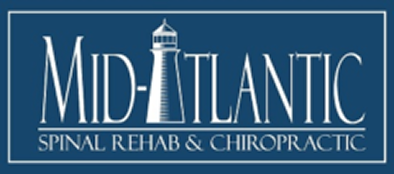Which Type of Mattress is Best For Me?
As a Baltimore Chiropractor that spends the majority of my time treating headaches, neck pain, and back pain in Baltimore, I often get asked questions about mattress types and which option is the best for a particular patient. I wanted to use this blog post to talk about the most common types of mattresses so that I can shed some light on the subject. The three most common types of mattresses (in no particular order) are traditional innerspring, air mattress/bladder system, and memory foam.
The first type of mattress is the traditional innerspring mattress. These are the mattresses that we grew up sleeping on. They differ based on size and spring coil count. Originally these mattresses were made to be flipped and/or rotated every few months to help balance the pressure on the springs. Newer innerspring mattresses are meant not to have to be rotated. Most people (I would estimate 75% of my Baltimore auto accident and Baltimore chiropractic patients) sleep on a traditional innerspring mattress. When new these mattresses are great and provide plenty of support. Overtime as the springs compress these mattresses become less supportive. Many patients have a combination traditional innerspring mattress with some form of pillow topper. The pillow topper helps the sleeper not “feel” the springs in the mattress and can make for a more comfortable mattress. Personally, I have never really liked innerspring mattresses as I find that they produce too many pressure points and that they deform over time.
The second type of mattress is the air mattress/bladder system. I am not talking about the $20 air mattress that we all have in our basement for an unexpected guest to crash on for a weekend. These are the “sleep comfort adjustable beds” that we see commecials for. Typically they demonstrate a couple where the husband tosses and turns all night and the wife next to him sleeps comfortably undisturbed. The idea is that with two different bladder systems that can be filled or emptied of air both partners can sleep comfortably regardless of their individual preferences for mattress firmness. I have no experience sleeping on this type of mattress, but my parents sleep on it and from what I can tell they seem to enjoy it.
The final type of mattress is the memory foam mattress. This is the latest type of mattress to hit the market. Memory foam is a formulated material that is meant to compress and absorb pressure. Two common manufacturers of these type of mattresses are Tempurpedic and Casper. People with a lot of acute neck and back pain as well as people who are heavier tend to prefer these mattresses since there are no springs to compress or to cause pressure points. As someone who grew up sleeping on traditional innerspring mattresses, once I made the switch to a memory foam mattress, I became a fan for life. I get a better nights sleep, fall asleep faster, and stay asleep longer on these mattresses than I ever did on a traditional innerspring mattress. But that’s just me.
Many Baltimore auto accident patients ask me if they should change out their mattress once they have been involved in a Baltimore auto accident or Baltimore work related injury. I generally urge them not to switch out their mattress. Most mattresses are meant to last 10-15 years with an average use of 8 hours per day. Unless your mattress is approaching the end of its lifestyle it is probably not worth it to switch. Rather, try purchasing a pillow topper or a memory foam topper to place on top to give it a few more years of use.
Further, mattresses are very expensive. I have seen them cost in excess of $3,000-$5,000. Over the lifetime of the purchase, a mattress is a worthwhile investment. However, I don’t think you need to spend that much. I recently purchased a Casper mattress (King size) that was shipped to my house for under $1,000. They come with a 100 day love it or lose it guarantee, in which if you do not like it they will take it back and give you a complete refund. I am personally very happy with mine.
Research shows that neither a firm nor a soft mattress is best. That is, it all depends on the individual. Whichever mattress you can get to sleep on quickly and stay asleep for 7-9 hours a day is the best one for you.
If you have any questions about mattress types please contact Mid-Atlantic Spinal Rehab & Chiropractic at (443) 842-5500.
Dr. Gulitz
